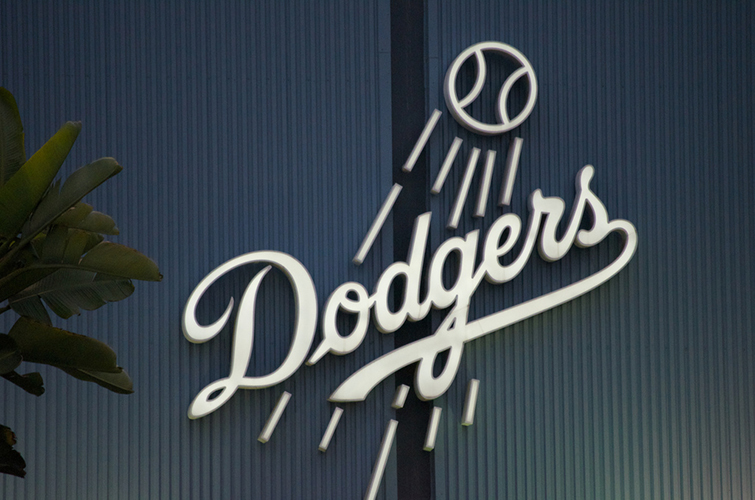
The Dodgers are planning to keep their payroll below the competitive balance tax threshold for at least four years, according to a report by Bill Shaikin of The Los Angeles Times.
Under the projections prepared for potential investors, the Dodgers would spend $185 million in 2019 and 2020, $191 million in 2021 and $196 million in 2022.
The threshold will be $206 million in 2019, $208 million in 2020, and $210 million in 2021, so the projections are actually comfortably below the tax level. In a way that gives hope that these are simply promises meant to sell potential investors on returns and not what they will actually be doing, as one can only assume this is connected to their desire to sell a minority share of the team that’s been a thing for at least two years now.
The Dodgers’ payroll projections are not binding. One high-ranking team official called the figures a “forecast,” and another said he would be “shocked” if the player payroll did not top $200 million next season.
“It’s a projection that presumably is made in good faith,” said an investment banker not involved in the Dodgers’ negotiations to sell an ownership stake. “If, two years from now, Mike Trout becomes available and they decide to break the bank for Mike Trout? It’s not binding, in that sense.”
There’s been speculation that this may be related to the debt service rule that has remained a rather vague, shadowy figure behind the scenes, but Commissioner Rob Manfred says it’s not an issue.
Major League Baseball Commissioner Rob Manfred said the league did not mandate the Dodgers keep their payroll below the threshold this year, or in any future year. He said any such mandate would be a violation of the league’s collective bargaining agreement and said each team determines its own payroll. “I think the payroll threshold is a very high number,” Manfred said. “If I’m a Dodger fan, I’m concerned about one thing: am I competitive on the field? High payroll, low payroll, they have managed to be competitive.” “We don’t try to regulate payroll through the debt service rule,” Manfred said. “We try to get to financial stability. There are other ways to get there. The Dodgers had a plan, and they stuck to it. Probably the most amazing thing about it is that they had a lot of high-payroll guys, they worked their way into a young team and got to real financial stability, and throughout the whole time they were competitive. That is no mean feat.” Manfred said Dodgers fans should not be concerned about an investor document that shows revenues would rise while payroll would remain largely flat. “Numbers in a presentation, to me, are a lot less meaningful than that ongoing commitment to being competitive,” Manfred said. “I believe that’s where the Dodger ownership group is.”
As expected, Andrew Friedman didn’t address it last week and the Dodgers aren’t going to now.
At a news conference last week, Dodgers president of baseball operations Andrew Friedman deflected a question about whether the team would be willing to pay the luxury tax next year. “It’s not something that we’ve really gotten into at this point,” he said. “More than that, there’s no question that we have plenty of resources to win a World Series next year. There’s no question about that. The talent on hand, and the flexibility to do that, is definitely there.”
The Times asked for Tucker Kain, the Dodgers’ chief financial officer and the managing director of Guggenheim Baseball Management, to explain to fans why the business model presented to potential investors showed that the team does not plan to spend above the threshold in the near future, even as revenues increase. “Unfortunately we have to decline the interview request,” Dodgers spokesman Steve Brener said.
As a fan, this is obviously not what you want to hear. It’s understandable that ownership would want to reset the increasingly punitive nature of the competitive balance tax penalties every now and then (which is a soft salary cap at this point, let’s be real), but to have a team like the Dodgers be this conscious of surpassing the threshold would be absolutely ridiculous.
Fans should not buy this as a valid excuse for why they cannot go after marquee free agents or make trades for players who have a significant contract, or re-sign players hitting free agency going forward. I joke about people accusing me of shilling for the Dodgers because they get mad that I don’t hate every move they make or whatever, but if the ownership does go this route, people who defend them really are shilling for billionaires.
If the $206m CBT threshold is in fact a cap, Dodgers’ 2019 CBT number for their 7 players under contract is $110m. Add in ~$15m for team benefits (same for every team), and the MLBTR total estimate of $45.7m for arb, the Dodgers are already at ~$171m.https://t.co/QTEWyUuy3j
— Eric Stephen (@ericstephen) November 8, 2018
Of course, as mentioned earlier, it’s completely possible that this will be even less binding than they say or that it’s simply a typical investor forecast that doesn’t meet their goals. But it’s definitely not what you want to hear from the Dodgers at this point, especially not after the last two years.
Guess we’ll find out what the truth is soon enough as free agency is about to get rolling.
 Dodgers Digest Los Angeles Dodgers Baseball Blog
Dodgers Digest Los Angeles Dodgers Baseball Blog